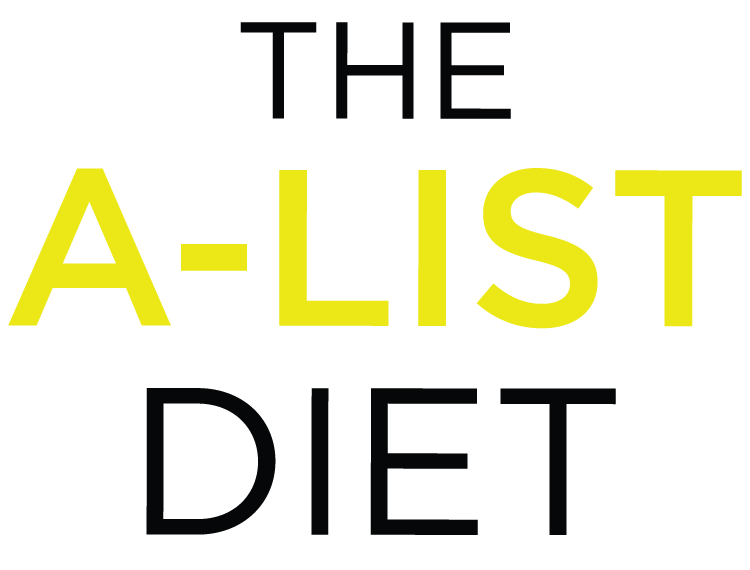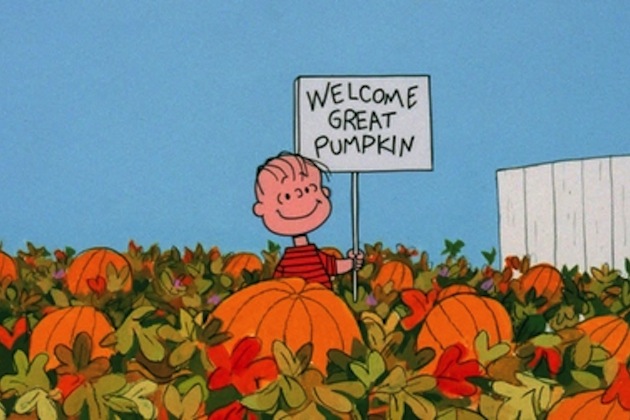I remember as a kid, it was tradition in my home to watch the TV classic, It’s the Great Pumpkin, Charlie Brown. Whether or not you’re a believer in the Great Pumpkin (oh, poor, sweet Linus), there’s no question how great these fall staples are for your health.
Pumpkins are excellent sources of protein and amino acids, two key components of The A-List Diet. And they’re on my recommended list of complex carbohydrates (which you can find on page 148 of The A-List Diet).
After you complete phase one (the “Reset Phase”) of my diet plan, pumpkin can certainly become a fixture in your daily meal plans, and you can make use of nearly every part of it.
Let’s start with the seeds.
Pumpkin seeds alone pack a powerful punch with 5 grams of protein in a single ounce. They also are a great source of omega 3 fatty acids and mono-unsaturated fats, which prevent inflammation — a HUGE factor in battling weight gain and chronic disease (I discuss how this comes into play on page 13 of my book).
Additionally, they contain an especially high amount of tryptophan, an essential amino acid that’s needed for general growth and development. Tryptophan also enhances serotonin (our body’s natural mood booster) and niacin (needed to maintain healthy cells) in the body. (You can read more about tryptophan and the benefits of essential amino acids in chapter six of The A-List Diet.)
You can lightly toss the seeds in macadamia nut oil with a pinch of salt and toast in the oven. Then, you can sprinkle them on top of salads, add them to a hearty bowl of soup, or just eat a handful as a snack.
But what about the rest of the pumpkin? Well, it’s got plenty to offer too…
Pumpkin pulp is rich in antioxidants and polyphenols (particularly beta-carotene, cryptoxanthin, lutein, and zeaxanthin). As I recommend, it’s important to get plenty of these to reduce inflammation and reduce free radicals, which the body generates when it’s in a state of stress. Too many free radicals can make inflammation worse and harm the immune system.
I recommend eating a “rainbow” of fruits and vegetables to get plenty antioxidants — pumpkins certainly have the orange portion of the “rainbow” covered. (You can find more ways to reduce inflammation on page 16 of The A-List Diet.)
Pumpkin pulp is also rich in leucine, one of my essential amino acids. It’s used in the liver, fat tissue, and muscle tissue. Leucine helps burn visceral fat, which is located in the deep layers of the body and is often the most stubborn type of fat to trim with diet and exercise. This essential amino acid also aids in insulin regulation and promotes the healing of bones, skin, and muscle tissue after injury.
Pumpkin pulp is also extremely low in calories — one cup contains just 49 calories.
To prepare pumpkins to eat, remove the stringy, fibrous strands from the inside of the pumpkin, and then trim off the skin. From there, pumpkins can be chopped and roasted to be used in salads. You can also throw it into a blender or food processor and use the puree in various recipes. Speaking of which, you can use fresh, organic pumpkin pulp puree to make a “skinny” version of pumpkin pie for Thanksgiving.
So, when you carve your pumpkins this year, don’t throw away the seeds! And if you have a few leftover pumpkins you’re not carving, you can incorporate them as a tasty and nutritious addition to whatever you put on your plate this autumn.
A-Lister’s Corner
It brings a huge smile to my face knowing I’ve helped clients make positive changes to better their health. And I know first-hand just how much joy and self-confidence losing weight and reclaiming your health can bring.
Whether you write to me through email or social media, I am so pleased to hear about your experiences with living a happier and healthier lifestyle. It’s my hope that it’ll help motivate others to stick with the changes they’ve made in their A-List journey.
Below is a recent success story posted on our A-List Facebook page, from Michelle C.:
“I started when I learned about it in April! I’m also 53 and down 42 pounds! No exercise for me!”
There’s just more proof that you don’t have to overexert yourself in the gym to lose weight. With moderate, light exercise and the right blend of protein-boosting and amino acids, you can hit your goal weight and transform your life.
If you’d like to share your story with me, please send an email to drfred@alistdietbook.com.
Recipe of the Week
On a crisp autumn weekend, take a trip to the local farmer’s market or pumpkin patch to pick up some of these delicious gourds. As an added bonus, pumpkins make lovely décor until you’re ready to use them.
Of course, that may be sooner than later after you see this delicious, seasonal breakfast recipe:
Pumpkin Protein Pancakes (page 168 of The A-List Diet Book)
Serves 2
Ingredients:
- 2 scoops protein powder
- ½ cup diced pumpkin
- ½ teaspoon ground cinnamon (or ¼ teaspoon pumpkin pie spice + ¼ teaspoon ground cinnamon)
- 2 large egg whites
- 3 to 5 packets SweetLeaf® stevia
- 1 teaspoon unsalted grass-fed butter
- 1 tablespoon coconut flour
- Macadamia nut oil spray
Directions:
- Combine all the ingredients (except the spray) in a blender and blend until smooth.
- Spray a bit of macadamia nut oil onto a nonstick griddle or large nonstick skillet and place over medium heat.
- Spoon about ¼ cup of batter per pancake onto the griddle.
- Turn the pancakes over when the tops are covered with bubbles and the edges look solid.
- Cook the other side until golden brown, then serve.
Sources:
- onegreenplanet.org/natural-health/why-everyone-should-add-pumpkin-seeds-to-their-diet/
- organicag.org/amino-acid-content-pumpkins-and-artichokes
- medicalnewstoday.com/articles/279610.php
- nutrition-and-you.com/pumpkin.html

